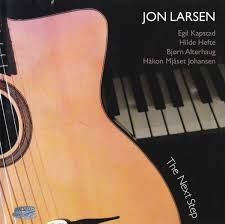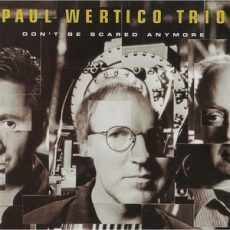
Daily Dose Of Jazz…
Nguyên Lê was born Le Thanh Nguyen on January 14, 1959 in Paris, France of Vietnamese ancestry. He began playing drums at the age of 15, then took up guitar & electric bass. After graduating in Visual Arts he majored in Philosophy, writing a thesis on Exoticism. A self-taught musician, Nguyên started out playing rock, funk, jazz standards, avant-garde jazz, pop, African, Caribbean, and other world music.
Devoting himself to music, in 1983 he created Ultramarine, a multi-ethnic band whose recording DÉ has been considered 1989’s Best World Music album. He went on to record several albums and worked with such musicians as Miroslav Vitous, Trilok Gurtu, J. F. Jenny Clarke, Dewey Redman, Andy Emler, Jon Christensen, Nana Vasconcelos, Glenn Ferris, Kenny Wheeler, John Taylor and numerous others.
He has played with the O. N. J., the French National Jazz Orchestra in which he played with Johnny Griffin, Louis Sclavis, Didier Lockwood, Carla Bley, Steve Swallow, Randy Brecker, Toots Thielemans, Courtney Pine, Steve Lacy, Dee Dee Bridgewater, Gil Evans, Quincy Jones, Randy Brecker, Vince Mendoza, Carla Bley, Per Mathisen, Marc Johnson, Peter Erskine, Trilok Gurtu, Paolo Fresu and Dhafer Youssef and numerous others.
He has released albums as a leader and as a sideman. His 1996 album Tales from Viêt-Nam blends jazz and traditional Vietnamese music. In spring 2011 he released Songs of Freedom, an album with cover versions of pop hits from the 1970s.
Guitarist and composer Nguyên Lê continues to perform, record and compose.
More Posts: bandleader,guitar,history,instrumental,jazz,music,synthesizer

Daily Dose Of Jazz…
Simon H. Fell was born on January 13, 1959 in Dewsbury, Yorkshire, England. He began playing double bass in 1973 and from 1978 to 1981 he read English Literature at Fitzwilliam College, Cambridge, England. His early group was a free-jazz trio with drummer Paul Hession and saxophonist Alan Wilkinson. They recorded and released their music on his label Bruce’s Fingers.
During this period Fell was significantly connected with The Termite Club in Leeds. He was a member of the free jazz trio Badland, the improvising string and percussion ensemble ZFP with Carlos Zingaro, Marcio Mattos and Mark Sanders, and SFQ, a quartet/quintet with clarinettist Alex Ward and a changing membership. He also performed in many other ensembles, including the London Improvisers Orchestra and Derek Bailey’s Company Week.
Simon wrote a major sequence of four new large-scale compositions titled Compilation. Free improvisation, rock and jazz all form key parts of the musical language. Noise guitarist Stefan Jaworzyn, Evan Parker and John Butcher were essential musicians to the projects, but he often deliberately made use of amateur or student musicians.
Bassist and composer Simon Fell, who is primarily known for his work as a free improviser and the composer of post-serialist compositions, died on June 28, 2020
More Posts: bandleader,bass,history,instrumental,jazz,music

Daily Dose Of Jazz…
Pamela Wise was born on January 8, 1956 in Steubenville, Ohio. She began composing and playing piano by ear at age five and started lessosn at nine. After studying the basics she began playing for her church choir, directed by her bassist father. While in high school she formed Ohio Movement, a r&b group performing throughout the Midwest and East Coast. Eight years later she left the band and moved to Cleveland, Ohio with her brother and entered Cuyahoga Community College to further study music.
A move to Detroit, Michigan with her brother led her to play with several r&b groups in the Detroit area, meeting her future husband Wendell Harrison and eventually composing and performing for Freddie Hubbard, Woody Shaw, Leon Thomas and Eddie Harris. In 1989 she formed a group that enlisted James Carter, Dwight Adams, Jaribu Shahid, Ali Muhammad and Andrew Daniels.
Pamela has collaborated with Regina Carter, Akua Dixon Turre, and with Jerry Gonzalez produced her cd Songo Festividad. She went on to release A New Message From The Tribe, Kindred Spirits, Negre Con Leche, and Pamela’s Club projects.
Composer, pianist and music director Pamela Wise continues to perform, record, collaborate and educate.
More Posts: bandleader,history,instrumental,jazz,music

Daily Dose Of Jazz…
Jon Larsen was born on January 7, 1959 in Bærum, Norway and when he was in his early teens he learned rock and soul songs on an acoustic steel-string guitar. Through friends, he learned about blues, jazz, flamenco, and classical guitar. After he heard Tears by Django Reinhardt on the radio, he decided that this is how he wanted his guitar to sound. At seventeen he formed a string trio and had his first professional job.
The 1970s Jon worked mainly as a painter until 1980 when he started the Hot Club de Norvege with guitarists Per Frydenlund and bassist Svein Aarbostad. They had a hit record when they performed with pop singer Lillebjørn Nilsen. He has worked with Chet Baker, Philip Catherine, Stéphane Grappelli, Warne Marsh, Biréli Lagrène, Babik Reinhardt and Jimmy Rosenberg. He has produced more than 450 jazz records for the label he founded, Hot Club Records.
He has led a group of musicians who played with Zappa and started the label Zonic Entertainment to record musicians who played with him .including Arthur Barrow, Jimmy Carl Black, Bruce Fowler, Bunk Gardner, Tommy Mars, and Don Preston.
A documentary Symphonic Django was released in 2008 about Larsen and guitar virtuoso Jimmy Rosenberg titled Jon & Jimmy, and appeared in the documentary film Fireball: Visitors from Darker Worlds In 2012.
Gypsy jazz guitarist, record producer, painter, and amateur scientific researcher Jon Larsen, who founded the group Hot Club de Norvège and received the Buddy Award for his lifelong contribution to jazz, continues to perform, record and produce.
More Posts: bandleader,guitar,history,instrumental,jazz,music

Daily Dose Of Jazz…
Paul Wertico was born January 5, 1953, in Chicago, Illinois. He began his professional career as a member of the Chicago based Simon & Bard Group. When Pat Metheny heard him play in 1983, he invited him and bassist Steve Rodby to join his band. During his time with Metheny, he played on ten albums and four videos, appeared on television, and toured around the world. He won seven Grammy Awards for Best Jazz Fusion Performance, Best Contemporary Jazz Performance, and Best Rock Instrumental Performance, as well as magazine polls, and several gold records.
Paul left Metheny in 2001 and formed the Paul Wertico Trio with John Moulder and Eric Hochberg. He collaborated with Larry Coryell, Kurt Elling, and Jeff Berlin. From 2000 to 2007, he was a member of SBB, the platinum-record-winning Polish progressive rock band. Wertico was a member of the Larry Coryell Power Trio until Coryell’s death in 2017.
He went on to create or gain membership in several groups Marbin, Paul Wertico’s Mid-East/Mid-West Alliance, Wertico Cain & Gray, and has won several awards. He has worked with Frank Catalano, Eddie Harris, Lee Konitz, Dave Liebman, Sam Rivers, Bob Mintzer, Terry Gibbs, Buddy DeFranco, Roscoe Mitchell, Evan Parker, Jay McShann, Herbie Mann, Randy Brecker, Jerry Goodman, Fareed Haque, Ramsey Lewis and the list goes on.
As an educator Paul has taught drums privately for 55 years, conducted clinics and masterclasses in addition to writing educational articles for Modern Drummer, DRUM!, Drums & Drumming, Drum Tracks, and DownBeat, and online for Musician.com. He is an Associate Professor of Jazz Studies at the Chicago College of Performing Arts of Roosevelt University, and also headed the school’s Jazz & Contemporary Music Studies program for five years. He served on the faculty of the percussion and jazz-studies programs at the Bienen School of Music at Northwestern University in Evanston, Illinois for 16 years, and taught at the Bloom School of Jazz in Chicago for several years.
Drummer and percussionist Parl Wertico continues to perform, record and educate.
More Posts: bandleader,drums,history,instrumental,jazz,music,percussion


